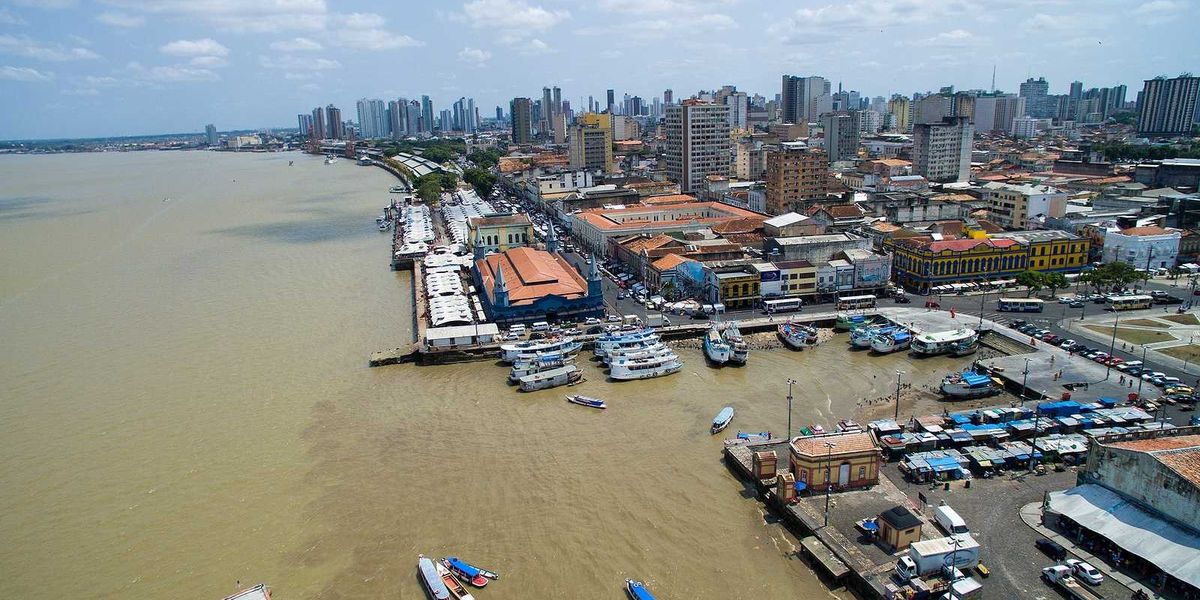carbon sequestration
The long-overdue report on carbon capture in Louisiana remains in limbo
Louisiana’s task force on carbon capture and sequestration (CCS) has yet to submit its findings, five months past the deadline, leaving the public and officials in the dark about the potential impacts of the controversial technology.
In short:
- Louisiana's CCS task force has missed its report deadline by five months with no explanation from its leaders.
- CCS projects are progressing in Louisiana, a prime location due to its geological features, despite concerns about safety and environmental risks.
- Opposition from local residents and environmental groups continues, particularly regarding the lack of proper scrutiny and potential health hazards.
Key quote:
“Even during the hearings of this task force, it became clear that the true aim here was dismissing or discrediting people’s concerns, not seeking to address them.”
— Jackson Voss, climate policy coordinator for the Alliance for Affordable Energy
Why this matters:
Despite a string of public meetings and a report due in February, the leaders behind this subterranean crusade aren't saying a word. Is this the future of environmental salvation or just another bureaucratic black hole? Read more: Climate activists pan carbon capture plans.
Seagrasses aren’t the solution to ocean plastic pollution
Recent findings debunk the optimistic view that Mediterranean seagrasses can effectively combat marine plastic pollution, revealing more harm than help.
In short:
- A 2021 study showed seagrasses trapping and removing plastic from the ocean, offering a hopeful solution.
- A new meta-analysis reveals that plastic pollution harms seagrasses, reducing their growth and disrupting ecosystems.
- Experts warn that seagrasses’ ability to trap plastic may cause more harm, as animals ingest the trapped plastic.
Key quote:
“I definitely don’t want people to move in the direction of saying, ‘We have seagrass beds and they’re trapping microplastics so that’s resolving the problem.’ That’s not resolving the problem—it’s just moving and concentrating it in a different location.”
— Alyssa Novak, coastal ecologist at Boston University
Why this matters:
Seagrass, often overlooked in the grand tapestry of marine ecosystems, plays a vital role in maintaining the health of our oceans. It serves as a nursery for fish, a filter for pollutants, and a powerful carbon sink. In the fight against microplastics, the story of seagrass is a stark reminder that the small things we often overlook can have a massive impact. Read more: Plastic pollution in the ocean.
Turning plant waste into carbon-sequestering bricks to combat climate change
Graphyte, a startup supported by Bill Gates, aims to fight climate change by burying carbon-sequestering bricks made from plant waste deep underground.
In short:
- Graphyte has developed a method to create carbon-sequestering bricks from plant waste, which are then buried to trap carbon dioxide.
- The company's goal is to store 50,000 tons of carbon annually, though experts question if this scale is sufficient to impact global emissions.
- The carbon removal industry faces challenges such as scalability, cost, and potential ethical concerns about diverting focus from emission reduction.
Key quote:
“I’m worried about our scale of deployment. I think we need to get serious fast.”
— Barclay Rogers, CEO of Graphyte
Why this matters:
Carbon removal technologies are important, as cutting emissions alone may not be enough to avoid catastrophic climate impacts. Innovative solutions like Graphyte’s bricks could play a significant role if they can scale effectively and economically.
A collaborative effort saves Clayoquot Sound's ancient forests
The Ahousaht and Tla-o-qui-aht First Nations will now oversee the conservation of 760 square kilometers of old-growth forests in Clayoquot Sound, with the support of philanthropic funding.
In short:
- The B.C. government and First Nations have designated 760 square kilometers of old-growth forests as protected conservancies.
- These protections nearly double the amount of safeguarded old growth in Clayoquot Sound to 1,639 square kilometers.
- Nature United provided $40 million to help First Nations buy out forestry-tenure holders, enabling this conservation effort.
Key quote:
"Collaborative work with First Nations is a cornerstone of our vision for old growth in this province."
— Bruce Ralston, B.C. minister of forests
Why this matters:
Protecting old-growth forests is important for maintaining ecosystem health, carbon storage, and cultural practices. By preserving these forests, we’re not only safeguarding the planet but also ensuring cleaner air and water for the surrounding communities. Read more: The push for standing forest protections in US climate policy.
Texas offers more coastal waters for carbon dioxide storage
Texas is opening over a million acres of offshore waters for companies to inject greenhouse gases underground to mitigate climate change.
In short:
- Texas issued its largest request for proposals to inject greenhouse gases underground to mitigate climate change yet, targeting Lavaca Bay, Matagorda Bay and other coastal areas.
- ,Backed by federal funding and with support from the oil and gas sector, carbon sequestration is expanding, despite concerns over long-term feasibility and cost.
- The Texas Railroad Commission seeks authority to regulate these wells, but environmental groups and lawmakers urge caution.
Key quote:
“We are really now on the cusp of moving away from institutional research and more towards broad commercial deployment.”
— Charles McConnell, director of the Center for Carbon Management in Energy at the University of Houston.
Why this matters:
Reducing atmospheric CO2 through sequestration could have immediate benefits. Lower CO2 levels can help mitigate the adverse effects of climate change, such as extreme weather events, heatwaves and poor air quality, all of which have direct impacts on human health. However, a continued dependence on fossil fuels, facilitated by carbon sequestration, could maintain high levels of other pollutants that pose serious health risks, including particulate matter and nitrogen oxides.
Research highlights fungi's key role in carbon capture
The underground networks of plant roots and fungi are proving to be essential in sequestering carbon in the soil, according to recent studies.
In short:
- Kew Gardens' fungarium, the world's largest collection of fungi, showcases the biodiversity and ecological importance of fungi.
- Mycologist Laura Martinez-Suz's research reveals that fungi, particularly mycorrhizal types, are crucial for carbon storage in soils, influencing the effectiveness of reforestation efforts.
- Nitrogen pollution disrupts beneficial fungi, but reducing pollution levels can help restore these critical networks.
Key quote:
“Replacing the complete set of fungi with other fungi has implications for long-term carbon sequestration in soil and biodiversity.”
— Laura Martinez-Suz, mycologist
Why this matters:
Understanding and protecting fungal networks is useful for improving carbon capture and mitigating climate change impacts, putting a focus on the importance of reducing pollution and supporting biodiversity. Read more: How fungi could help clean up our biggest toxic messes.
Carbon sequestration faces resistance in rural America
A plan to capture and store carbon dioxide underground in Montana faces fierce local opposition, despite being backed by major oil companies and the Biden administration.
In short:
- The proposed project aims to store carbon emissions underground in Carter County, Montana, to combat climate change.
- Local ranchers and residents fear the impact on the environment and community, citing a lack of desire to become a national "dumping ground."
- Existing carbon capture projects face similar issues nationally, raising concerns about safety, environmental impacts, and technology effectiveness.
Key quote:
"They are presenting this as a climate solution and I don’t know that it is. The only thing I do know is that it is part of their plan to continue producing oil and gas."
— Liz Barbour, manager of Cinch Buckle Ranch
Why this matters:
Many local residents and environmental groups are raising concerns about the safety and long-term impacts of storing carbon underground. Fears of potential leaks, groundwater contamination, and seismic activity echo through community meetings and public forums. Critics argue that such projects allow fossil fuel companies to continue business as usual, prolonging reliance on oil and gas rather than transitioning to renewable energy sources.









